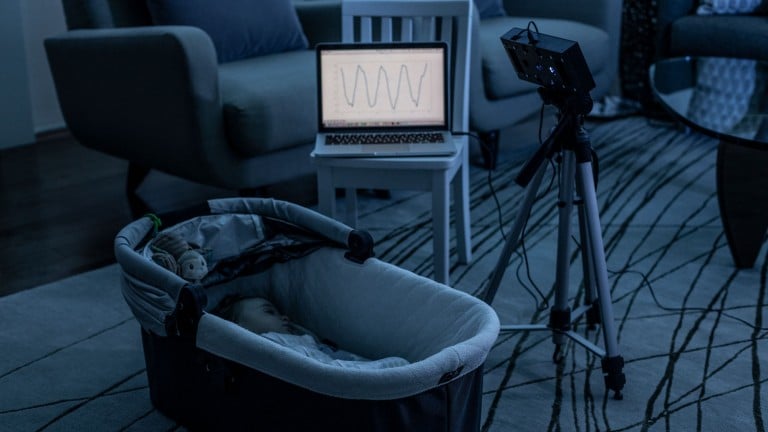The news: An app for smart speakers uses white noise to monitor the breathing and movement of sleeping babies. Developed by researchers at the University of Washington, BreathJunior plays the noise from the device and then records how it is reflected, in order to detect the tiny motions made by infants’ chests as they breathe. It can also pick up the sound of crying.
How? It does this by using the microphones inside the speakers to pick up the reflected white-noise sound. An algorithm cancels out the original noise signal to leave just the part contributed by the baby's breathing and movement. The system also uses the white-noise reflections to pinpoint exactly where the baby is in the room. This sort of very finely tuned tracking is possible now thanks to advances in both the hardware and software inside smart speakers.
Put to the test: First, the researchers tested BreathJunior on an infant simulator, setting it at different breathing rates—from 20 breaths per minute to 60. They also used the simulator to test whether the app could pick up abnormal breathing patterns like apnea, which are common in premature babies. The app was then successfully tested on five babies in a local hospitals’ neonatal intensive care unit, all of them connected to hospital respiratory monitors.
Next steps: The team plans to commercialize this technology through a university spinout called Sound Life Sciences. The results of the trial will be presented at the MobiCom conference in Mexico next week.
Sound familiar? The same team used similar techniques at the start of this year to create an app to spot opioid overdoses and another six months later to detect cardiac arrests. This latest use—to basically soothe the nerves of new parents who are using white noise to settle their babies anyway— suggests it could be deployed for further applications still.
Sign up here for our daily newsletter The Download to get your dose of the latest must-read news from the world of emerging tech.

